by Steve Selden | Jan 15, 2015 | Videos
In the late 1720’s peace between England and France was on edge, and in 1730 the Hudson Bay Company initiated construction on Fort Prince of Wales at the mouth of the Churchill River (650 meters across at that point) at Eskimo Point. The strategic location – the peninsula at the mouth of the Churchill River and Button Bay to the west – affords an ideal location for defense and spotting ships on the horizon. The availability of raw material, quartzite and limestone for building, and a natural harbor just upriver at Sloops Cove added to the prime location. Severe weather conditions slowed construction considerably to say the least.

Looking for polar bears from inside fort Prince of Wales. Steve Selden photo.
Twenty-four tradesmen and laborers were sent from England in 1731 and the first large, shaped stone was laid on June 3, 1732. It was estimated that construction would take six or seven years to complete using four team of oxen and 84 men. Forty years later in 1771, the fort was completed. In 1782 Jean Francois de la Perouse and his three French warships sailed into Hudson Bay and captured the fort and the 39 non – military men inside without a single shot fired from either side. The men “maintaining” the fort were untrained in cannon operation. The forged steel cannons needed six to eight men to fire them efficiently and accurately.
Fort Governor at the time, Samuel Hearne, realized the mismatch in military strength and surrendered peacefully. In 1783, Fort Prince of Wales was returned to the Hudson Bay Company in a partially destroyed state. With the decline of the fur trade the importance of the fort waned and a downsized post was reestablished farther inland on the Churchill River.
Summer in Churchill is the optimal time to get a walking tour of Fort Prince of Wales. Visit nathab.com for travel options to Churchill!
by Steve Selden | Dec 18, 2014 | Churchill News
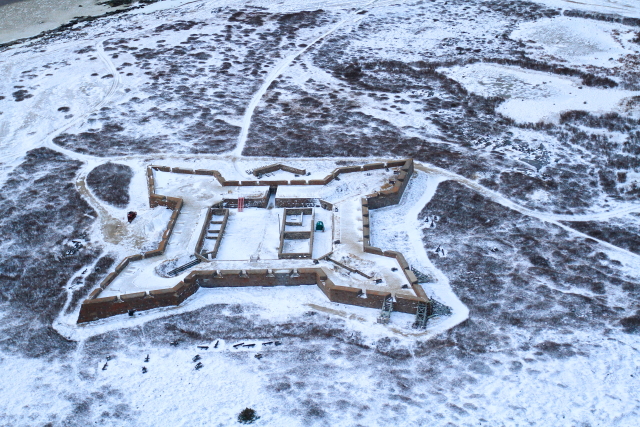
Fort Prince of Wales on the West side of the Churchill River.
If you venture to Churchill in the summertime with Natural Habitat Adventures there’s a good chance you’ll travel cross-river and tour Fort Prince of Wales with a guided interpretation from a Parcs Canada ranger. An intriguing and somewhat comical history endures.
In 1717, just a few years after the Treaty of Utrecht returned all Hudson Bay posts to England, James Knight from the Hudson Bay Company built the ” Churchill River Post” and it was renamed “Prince of Wales” two years later. The initial trading post/fort was constructed to pretty much take advantage geographically of the more northern location and general accessibility to multiple regional fur traders and native trappers.
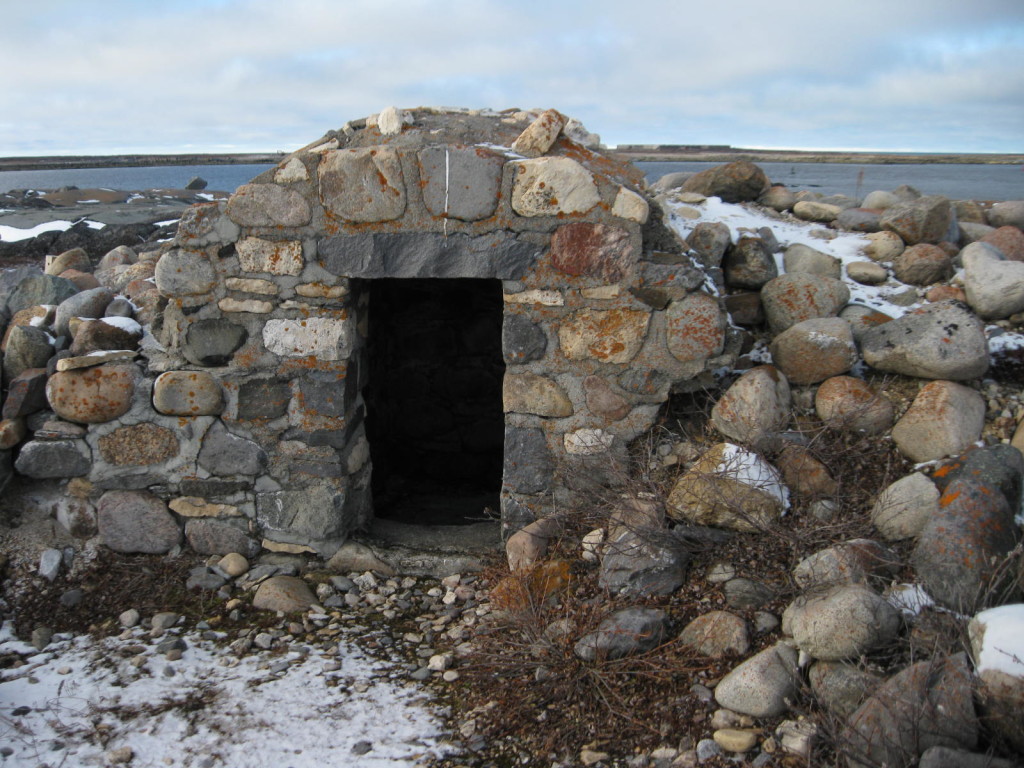
Ammunition cache at Cape Merry for cannon protection of Fort prince of Wales. Karen Walker photo.
With the ongoing feud and battle to control the fur industry between the french and English, the need for a stronghold of greater security seemed like a good idea.
In 1731 construction of the current day Fort Prince of Wales began out on Eskimo Point at the mouth of the Churchill River. A mere 40 years later the four-meter-thick stone walls were completed and the 40 cannon mounts were in place. Nearly unbearable winter living conditions made the construction process less than expeditious. With the sparseness of trees in the area, gathering firewood for heat also was a laborious task. If we could hear the stories from those days.

A view across the Cape Merry barrens past the battery and to Fort prince of Wales.
The star fort design, originally conceptualized in the mid-15th century in Italy worked quite well in covering all angles of attack with cannons. Walls were constructed low and thick to withstand cannon fire. A deep ditch surrounding the fort was to compensate for the lower walls.
The grand irony of the entire project culminated in 1782 when three French warships commanded by general La Perouse captured the fort without a single shot being fired. During the whole construction process, the minor details of training the stationed men how to fire a cannon seemed to slip through the cracks. Again, with the severe weather conditions, one can only imagine how basic survival during construction trumped all other endeavors.
In 1934 the process of reconstructing the partially demolished and downtrodden fort began. That process has restored the fort to a most presentable condition. In recent years, an intense archeological effort has produced incredible artifacts used to paint a more vivid picture of life in the 18th century.
by Steve Selden | Aug 22, 2018 | Tour News

A beluga whale in the murky Churchill River. Reinhard Mink photo.

Polar bear scouring the tundra. Reinhard Mink photo.

Aerial of view of Halfway Point and the Hudson Bay. Reinhard Mink photo.
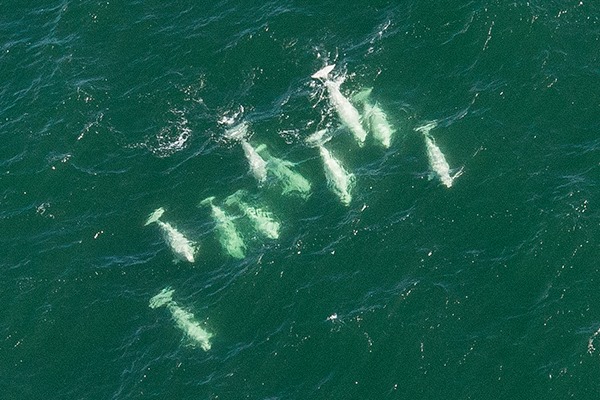
Pod of male beluga whales in the Hudson Bay. Reinhard Mink photo.
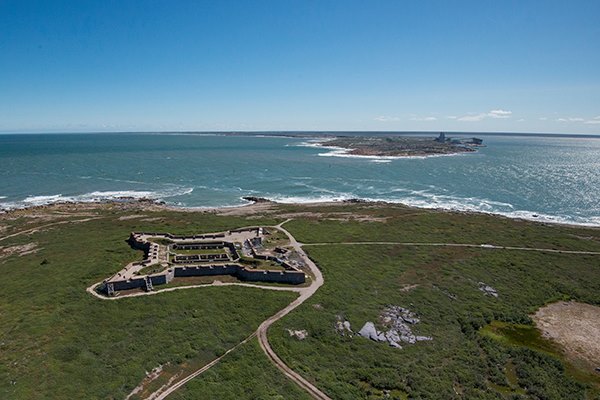
View of Churchill with Fort Prince of Wales in the foreground. Reinhard Mink photo.
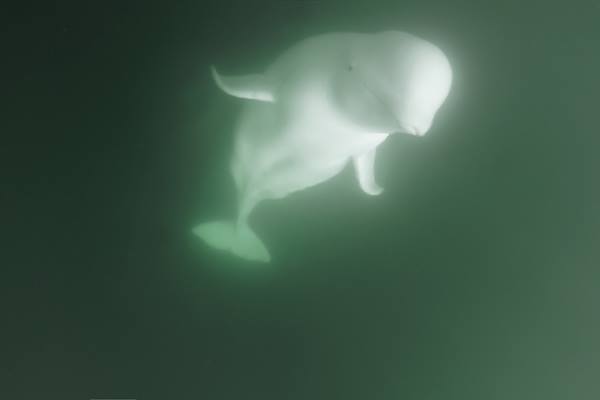
Beluga seemingly hovering in the Churchill River. Reinhard Mink photo.
Summer is winding down in the north and the action has been relentless with the usual incredible Churchill summer highlights. The polar bears have been wandering the rocky Precambrian coast of the Hudson Bay and Churchill River and belugas have posed for shots like these above for the entire summer. We can’t get enough of the awesome scenic vistas near the coast and inland along rocky tundra. Another summer in the north with the wildlife one only dreams of! These images from Reinhard Mink are just a sample of the wildlife wonders of Churchill!
by Steve Selden | Jan 8, 2018 | Videos
The incredible dining experience known as RAW will return to Churchill on March 2 – 10. The annual gastronomic wonder sets up out at Fort Prince of Wales across the Churchill River. A transparent glass roof allows diners to enjoy gourmet cuisine under the northern lights while staying comfortably warm. The whole Churchill experience is full of northern wonder!
by Steve Selden | Aug 18, 2017 | Churchill Photography

Reflection of a skiff in Button Bay, Churchill. Water clear and pristine. Katie de Meulles photo.

Polar bear swimming in the bay near Churchill. Katie de Meulles photo.

Close up of a polar bear swimming in the bay around Churchill. Katie de Meulles photo.

Polar bear resting on the rocks on Eskimo Point. Katie de Meulles photo.
Button Bay is the secluded little cove just around Eskimo Point where Fort Prince of Wales rests as the iconic outpost of the long-lost fur trade in the north. The rocks of Eskimo Point are resting areas for polar bears seeking some quiet and solitude during the summer months. Quite often groups of travelers can see and photograph polar bears on these rocky shores. These shots by Churchill photographer Katie de Meulles were captured this week and show the happenings around Button Bay.
Once in Button Bay there are sometimes bears swimming across to the beach or coming in from the northern shore to congregate in Churchill and await the ice pack of November. From there they will venture out to hunt seals all winter then return in the spring again!















